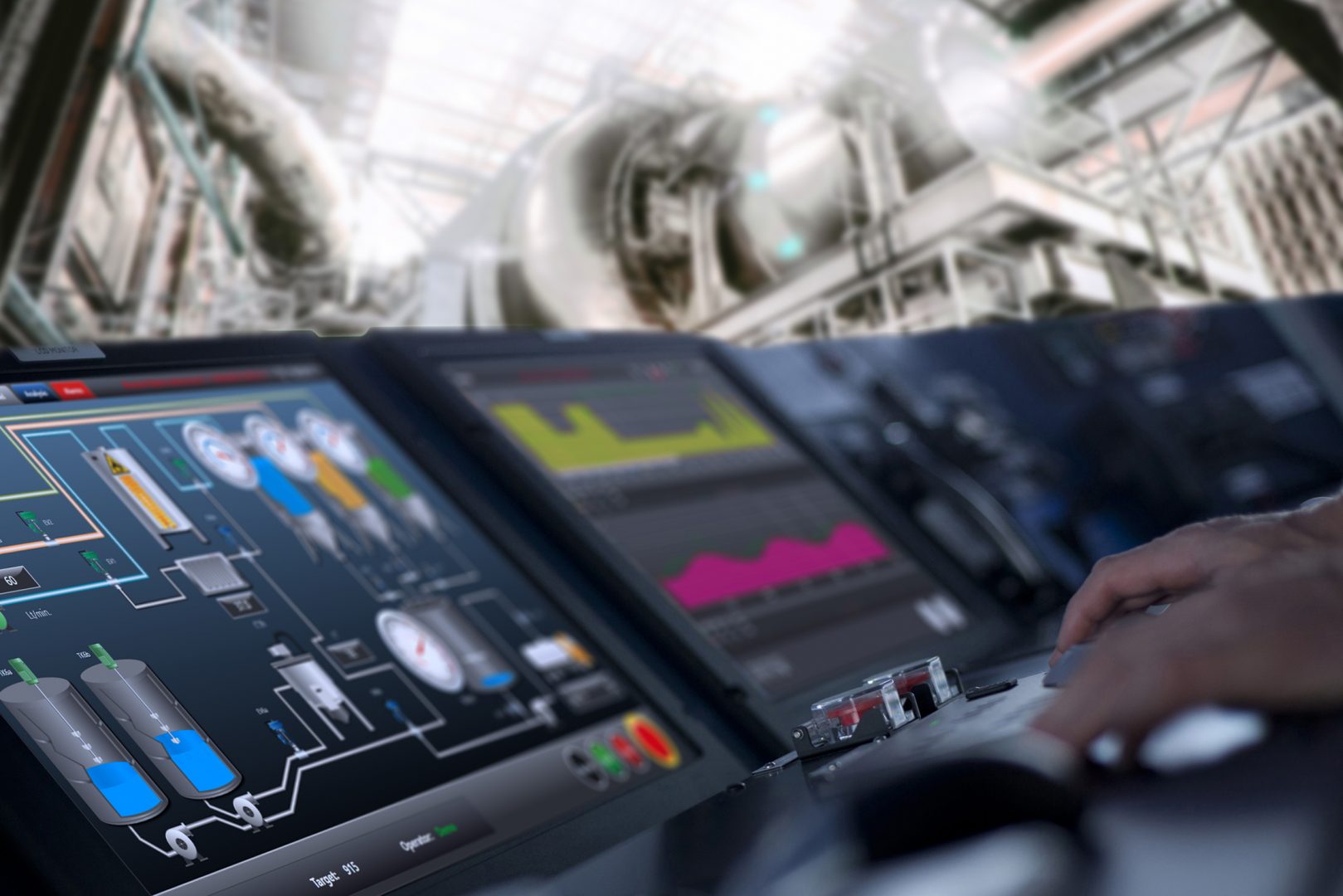 Ethernet connectivity and HMIs have driven change through SCADA control systems, making them radically easier to design, install and operate, thus lowering the cost of ownership for operators.
Ethernet connectivity and HMIs have driven change through SCADA control systems, making them radically easier to design, install and operate, thus lowering the cost of ownership for operators.
The physical appearance of SCADA (supervisory control and data acquisition) control systems has changed notably over the last 10 years, but then so have control panels…
Traditionally each control panel whether for a machine or a control station for an entire plant was built as a bespoke item and included a range of dials, gauges, controls and pushbuttons. There was usually a unique schematic with integral indicator lamps that showed the status of the plant or machinery under control. Making custom physical panels is time consuming and therefore expensive. Furthermore, they are inflexible, so if changes are made to the plant or machinery substantial changes almost always had to be made to the control panel.
Today all of this can be replaced by one or more off the shelf graphics display screens or, as they are more commonly known, human machine interface (HMI). Often these are touchscreen operated, although some operators prefer to have separate controls.
The display screens can vary from simple LED read outs, to large format high resolution flat screens upon which can be displayed a vast array of schematics, data (real time and/or historic), warnings and alarms. They can also be used to call up videos (instructional or live feeds from cameras around the plant), instruction manuals and augmented reality displays. Their data processing power means they can turn raw field data into up-to-the-minute, easily understood, high level plant and process information so that operators know the precise status of machinery and processes.
 The screens are often also set up to provide access to the internet, to interface with other plant and machines and/or to interface with IT systems providing enterprise management, raw materials management and dispatch logistics. Multiple HMI screens dotted around the plant provide further easy access, alongside central control rooms and possibly even in remote or off-site management offices.
The screens are often also set up to provide access to the internet, to interface with other plant and machines and/or to interface with IT systems providing enterprise management, raw materials management and dispatch logistics. Multiple HMI screens dotted around the plant provide further easy access, alongside central control rooms and possibly even in remote or off-site management offices.
Usually the various levels of function are protected by different passwords so that only authorised personnel can see higher levels of information and make major changes to plant settings, while operating personnel still have access to all appropriate information and functions.
Ethernet
Simultaneously with the HMI revolution there has been a shift behind the scenes of SCADA installations, namely the adoption of rugged Industrial Ethernet and other single-cable technologies.
Put simply, Ethernet is a communications solution that has the potential to massively reduce the wiring needed within a control system. It can do this because an Ethernet cable is able to transmit signals from multiple devices, whereas conventionally each device required its own dedicated cable. This can cut installation time, cost and effort by very significant amounts and often reduces hardware costs.
Further – and probably more important in the long run – Ethernet makes system reconfiguration very much simpler, so that plant and machinery can be easily altered to meet changing needs. In fact, it is fair to say Ethernet often reduces systems re-wiring from a job of great complexity to one of plug and play simplicity. This enables and encourages frequent plant reconfiguration so that it is constantly reoptimised to meet changing market requirement.
Enabling emerging technologies like HMIs and Ethernet are just two aspects of how modern SCADA has evolved to become simple, adaptable and very cost effective.





